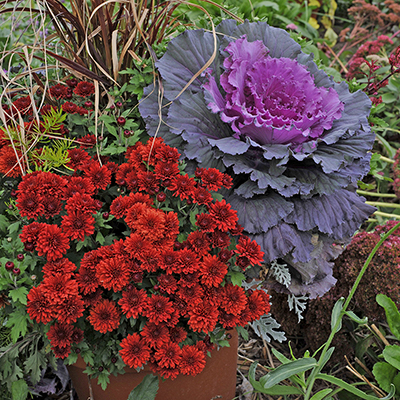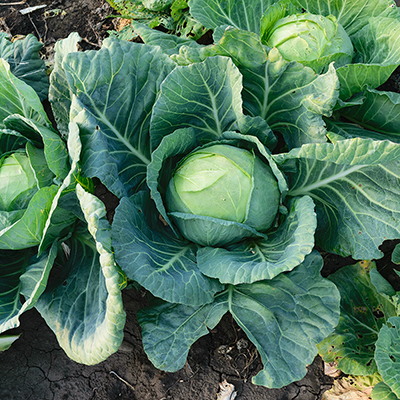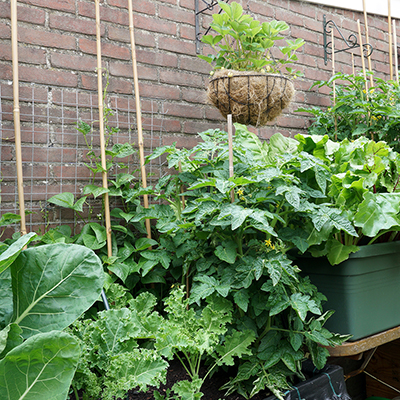How to Grow Kale

Last updated December 20, 2023
Grow kale in your home garden for a harvest of healthful leafy greens. Kale is a nutrition powerhouse and easy to grow in a vegetable garden.
Learn to grow this cool-season vegetable and enjoy plenty of greens for salads, sides and smoothies in your kitchen.
Difficulty:
Beginner
Duration:
2-4 hours
Table of Contents
Site and Soil and Season
Start with Seeds or Seedlings
How to Plant Kale
How to Care for Kale
How to Harvest and Store Kale
Site and Soil and Season

Kale is a cool season crop planted in early spring or late summer. You can plant kale in-ground or in raised garden beds. It thrives in full sun and rich, fertile soil.
Kale will tolerate part shade (less than six hours of sunlight), but plants will not be as robust. The leaves will still be fine for eating, however. Kale likes lightly acidic soil with a pH between 6.2 and 6.8. You can test your soil with a soil test kit purchased from the Garden Center or from your local Cooperative Extension Service.
Prepare the garden bed with amendments like organic compost, cottonseed meal or blood meal before planting. Amending soil improves drainage and provides nutrients to the plants as they grow.
You can set out plants in spring 3 to 5 weeks before the last frost for an early summer harvest. In late summer, begin planting kale 6 to 8 weeks before the first frost for a fall harvest. In hardiness zones 8 to 10, you can successively sow kale each week in late summer for a steady harvest of leafy greens.
Most kale varieties mature in 40 to 65 days.
Check the Frost Date Calendar for average dates of first and last frost.
Start with Seeds or Seedlings

You can grow kale from seed or seedling, and you can plant them outside at about the same time.
If starting seeds indoors, sow kale seeds about 4 weeks before transplanting. A few days before you're ready to transplant seedlings into the garden, harden seedlings by reducing water and taking them outside for a few hours each day. After they're accustomed to outside temperatures, plant the seedlings 12 to 18 inches apart.
If you miss out on the indoor sowing window, don't worry. Kale is an easy plant to grow from seed directly sown in the garden bed. In spring, sow seeds or plant seedlings a few weeks before the last frost. For a summer crop, sow seeds or plant seedlings in mid-summer. You want to time the harvest to the first date of frost in fall.
Kale, like collards and other hearty greens, tastes sweeter after a light frost. The chilly temperatures convert starches in the leaves into sugars.
How to Plant Kale

Direct sow kale seeds in the garden about 1/4-inch deep. When the plants have 3 to 4 true leaves, thin seedlings 12 to 18 inches apart and rows 2 feet apart. You can transplant the thinned seedlings to another part of your garden or plant them in containers like grow bags.
If you're starting with seedlings from the Garden Center, plant them as deep as they are in the container and space 12 to 18 inches apart. Kale grows best in temperatures below 75 degrees Fahrenheit. Above 75 degrees, the leaves will not be as tender and may taste bitter.
How to Care for Kale

In the garden, care for kale with regular watering. Kale likes about 1 to 1 1/2 inches of water each week. Use a rain gauge to help measure rainfall in your garden.
Use mulch to help the soil retain moisture around kale plants. Mulch benefits plants by keeping down weeds and preventing soil from splashing on leaves.
Kale is an easy-growing crop, but you may find that you're sharing it with cabbage worms and their adult form. These white butterflies can be seen flying around plants in summer.
Learn to identify cabbage worms, cabbage loopers and other pests. An effective treatment is simple and organic: fill a bucket with soapy water and with your hands, pick off the caterpillars and drop them in the bucket. Spraying insecticidal soap or Bt (Bacillus thuringiensis) is also effective. Bt is preventative and works best before you see caterpillars and butterflies. Be sure to follow label directions for using and storing garden chemicals.
How to Harvest and Store Kale

Harvest kale leaves when they're about the size of your hand. Pick the outer leaves first, working your way to the center. Use garden snips to cut leaves at the base of the stalk. Wash the leaves when you bring them inside. Store them in a loose plastic bag for up to a week in your refrigerator.
Kale is a tough plant that will continue to grow into winter. Help extend the crop by using row covers, thick mulch and plastic tunnels.
Although usually grown as an annual, kale is a biennial plant. This means it completes its lifecycle in two years. If you leave plants in the ground over winter, they'll flower and produce seeds the following spring. Collect those seeds for future planting.
Whether you need the right planters, seeds or potting soil, The Home Depot delivers online orders when and where you need them.



























